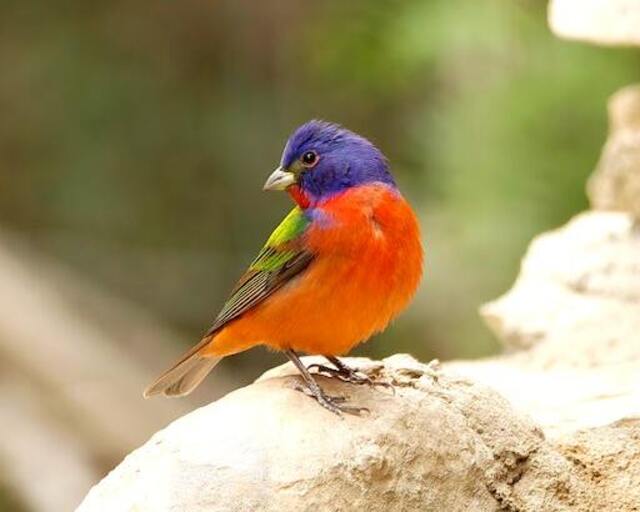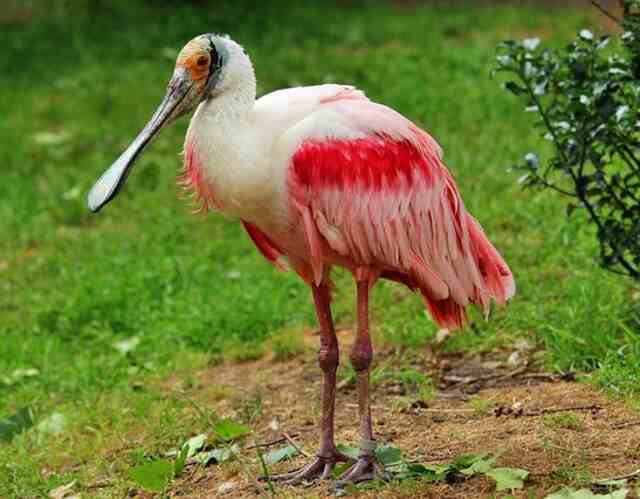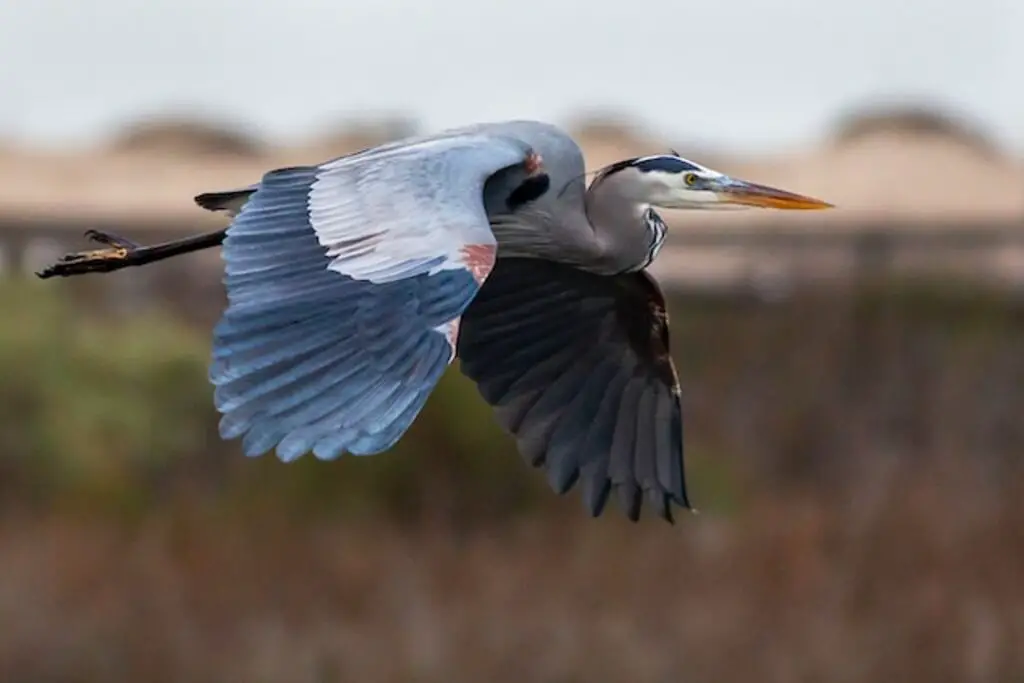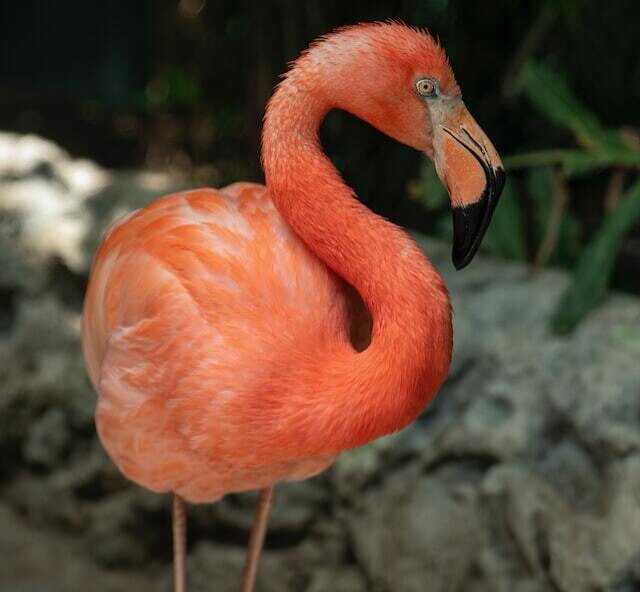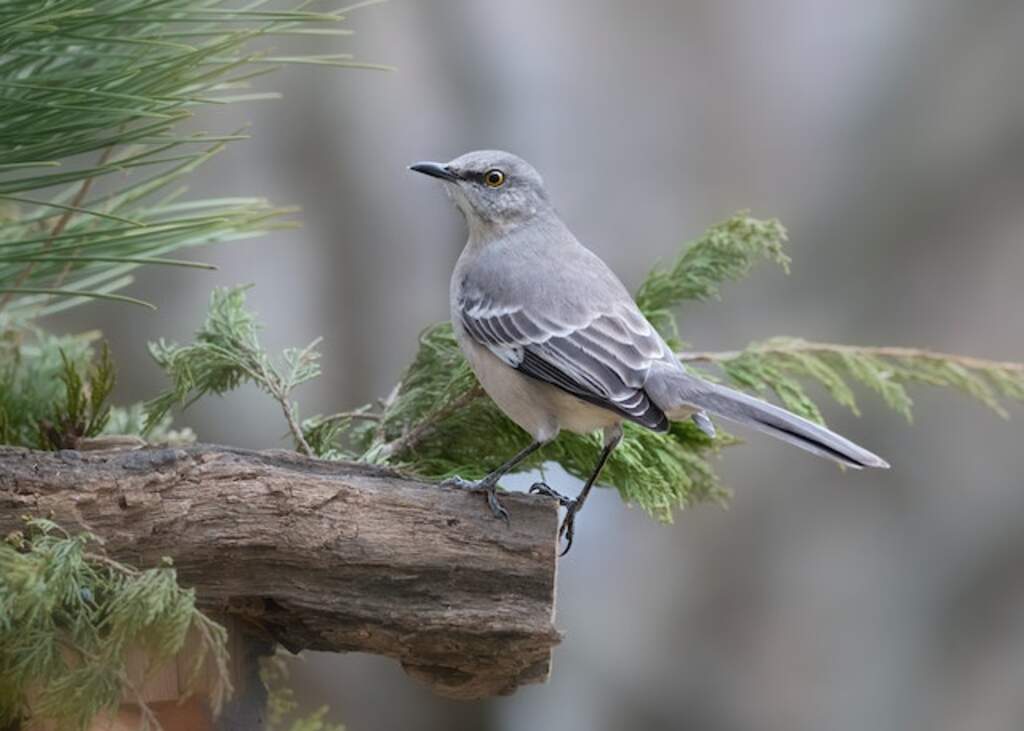Florida is a birdwatcher’s paradise, and the birding hotspots in Florida are some of the best in the world. From rare wading birds in wetlands to colorful migrants along the coast, the Sunshine State offers unforgettable sightings around every corner. Whether you’re a seasoned birder or just getting started, these top birding destinations will take your wildlife experience to the next level. In this guide, we’ll highlight the must-visit birding hotspots across Florida and what makes each one special.
Table of Contents
- 1 Key Takeaways:
- 2 Birdwatching Hotspots in Florida
- 3 Florida’s Ecological Richness for Birds
- 4 Everglades National Park
- 5 Corkscrew Swamp Sanctuary
- 6 Merritt Island National Wildlife Refuge
- 7 Dry Tortugas National Park
- 8 Sanibel Island
- 9 Big Cypress National Preserve
- 10 Rookery Bay National Estuarine Research Reserve
- 11 Lake Apopka Wildlife Drive
- 12 St. Mark’s National Wildlife Refuge
- 13 Conclusion
- 14 FAQs: Best Birdwatching Hotspots in Florida
- 14.1 What are some popular birdwatching hotspots in Florida?
- 14.2 What makes Florida ecologically rich for birds?
- 14.3 What bird species can be observed in Everglades National Park?
- 14.4 What bird species are found in Corkscrew Swamp Sanctuary?
- 14.5 What bird species can be observed in Merritt Island National Wildlife Refuge?
- 14.6 What bird species can be observed in Dry Tortugas National Park?
- 14.7 What bird species can be observed on Sanibel Island?
- 14.8 What bird species can be observed in Big Cypress National Preserve?
- 14.9 What bird species can be observed in Rookery Bay National Estuarine Research Reserve?
- 14.10 What bird species can be observed along Lake Apopka Wildlife Drive?
- 14.11 What bird species can be observed in St. Mark’s National Wildlife Refuge?
- 15 Author
Key Takeaways:
- ✅ Florida offers some of the best birding hotspots in North America.
- ✅ Diverse habitats support hundreds of year-round and migratory bird species.
- ✅ Top spots include parks, wetlands, and coastal refuges across the state.
- ✅ Ideal for both beginner and expert birders seeking unforgettable sightings.
Birdwatching Hotspots in Florida
Florida is a birdwatcher’s paradise with numerous hotspots. Everglades National Park, Merritt Island, and Corkscrew Swamp Sanctuary are popular destinations. These hotspots offer diverse bird species, from elegant wading birds to vibrant migratory flocks, providing excellent opportunities for birdwatching enthusiasts.
Florida’s Ecological Richness for Birds
Florida’s diverse ecological conditions make it a haven for birdwatching enthusiasts. The state is home to over 500 bird species, making it one of the best places in the United States for birdwatching.
The wetlands, forests, and coastal areas found in Florida provide unique habitats that attract a wide variety of bird species. The state’s extensive coastline offers excellent opportunities for observing seabirds, while inland wetlands and marshes provide habitats for wading birds and waterfowl.
The hardwood and pine forests of Florida are home to various woodpeckers, songbirds, and birds of prey, such as the red-shouldered hawk.
Florida’s geographic location also contributes to its ecological richness for birds. The state serves as a vital stopover point for migratory birds traveling between North and South America, attracting numerous species during the spring and fall migration seasons.
For birdwatching enthusiasts, Florida’s diverse range of ecosystems and bird species make it an ideal destination for exploring the state’s top birdwatching locations.
Everglades National Park
Everglades National Park is one of the most renowned birding destinations in Florida, boasting diverse ecosystems that include marshes, swamps, and mangrove forests. Its unique habitats make it a perfect location for a wide variety of bird species.
With over 350 species of birds identified in the park, birdwatchers are sure to spot something unique and interesting. The park is home to the rare Cape Sable Seaside Sparrow and the Everglade Snail Kite. Waterbirds such as herons, egrets, and ibises are also common sightings.
The park has several boardwalks and trails that offer exceptional birdwatching opportunities. The Anhinga Trail is a popular option where visitors can spot anhingas, cormorants, and purple gallinules.
The Mahogany Hammock Trail is perfect for viewing woodpeckers and warblers, while the Flamingo area is ideal for spotting shorebirds and wading birds.
For those interested in birdwatching tours, the park offers ranger-led tours that are highly recommended. Visitors can learn more about the park’s bird species while exploring its unique ecosystems.
Birds to Look Out for in Everglades National Park
| Bird Species | Habitat |
|---|---|
| Cape Sable Seaside Sparrow | Saltwater Marshes |
| Everglade Snail Kite | Marshes and Wet Prairies |
| Great Egret | Wetlands |
| American White Pelican | Freshwater Lakes and Ponds |
| Osprey | Tidal Creeks and Estuaries |
Corkscrew Swamp Sanctuary
Corkscrew Swamp Sanctuary, located in southwest Florida, is a well-known birdwatching destination. The sanctuary’s 14,000 acres of protected land provides a home to a diverse range of bird species, including the endangered wood stork, the little blue heron, and the tricolored heron.
The sanctuary’s boardwalk trails offer visitors an up-close look at the sanctuary’s unique ecosystems, which include wet prairies, pine uplands, and the largest remaining stand of old-growth bald cypress trees in North America.
In addition to birdwatching opportunities, visitors may also catch a glimpse of other wildlife, such as alligators, turtles, and otters.
| Trail Name | Description |
|---|---|
| Main Boardwalk and Marsh Trails | A 2.25-mile long trail that winds through the sanctuary’s wet prairies and cypress swamps. Visitors have the chance to observe a wide variety of bird species, including the colorful painted bunting. |
| Letaher Fern Trail | A half-mile long trail that leads visitors through pine forests and wet prairies. The trail is known for its diverse birdlife, including the threatened red-cockaded woodpecker. |
| Bird Rookery Swamp Trail | A 12.5-mile long trail that passes through the sanctuary’s pine uplands and cypress swamps. Visitors have the opportunity to observe a variety of bird species, including the endangered snail kite. |
Corkscrew Swamp Sanctuary also offers guided birdwatching tours led by knowledgeable naturalists. These tours provide visitors with a deeper understanding of the sanctuary’s ecosystems and the bird species that call it home.
Overall, Corkscrew Swamp Sanctuary is a must-visit destination for birdwatching enthusiasts in Florida, offering a unique glimpse into the state’s varied ecosystems and diverse avian population.
Merritt Island National Wildlife Refuge
Merritt Island National Wildlife Refuge is a premier birdwatching destination in Florida. The refuge spans over 140,000 acres and encompasses a diverse range of habitats, including salt marshes, coastal dunes, and freshwater impoundments, which provide habitats for more than 300 bird species.
One of the best ways to experience the refuge’s bird life is by following the Black Point Wildlife Drive. The seven-mile drive routes through a variety of habitats, offering birdwatchers the opportunity to spot resident and migratory birds.
Along the drive, you will find several observation platforms providing unobstructed views of the surrounding bird life.
Bird Species to Look Out For
Visitors to Merritt Island National Wildlife Refuge can expect to see a wide range of bird species, including the snowy egret, pelicans, ospreys, and roseate spoonbill. The refuge is also home to the elusive Florida scrub-jay, a threatened species only found in Florida.
If you’re lucky, you may spot endangered species such as the wood stork, reddish egret, and least tern, who call the refuge’s coastal habitats home.
Dry Tortugas National Park
Dry Tortugas National Park is a unique birdwatching location that can be accessed by boat or seaplane from Key West. The park covers a vast area of 100 square miles and is home to an impressive variety of bird species, making it a top destination for birdwatching enthusiasts.
The park’s remote location and unique ecosystems make it an important stopover for migratory birds. Visitors can expect to observe species such as the Magnificent Frigatebird, Brown Noddy, and Sooty Tern, among others.
The park is also home to endemic and endangered species, including the White-crowned Pigeon, and Peregrine Falcon, making it an important conservation site.
The park’s birdwatching trails and tours offer visitors the chance to explore the various habitats and witness the diverse bird species that call the park home. One popular birdwatching spot is Loggerhead Key, which provides exceptional views of seabirds in their natural habitat.
Visitors can also explore the park’s coral reefs and seagrass beds, which provide unique opportunities for underwater birdwatching.
Dry Tortugas National Park is a must-visit destination for serious birdwatching enthusiasts, offering a rare chance to observe unique species in a stunning natural setting.
Sanibel Island
Sanibel Island is a must-visit destination for any birdwatching enthusiast. With its diverse habitats, including beaches, wetlands, and nature reserves, the island is a paradise for bird enthusiasts.
The island’s natural attractions include popular spots like J.N. “Ding” Darling National Wildlife Refuge, where visitors can observe over 245 bird species. The refuge also has a number of nature trails and boardwalks that offer excellent birdwatching opportunities.
Other birdwatching hotspots on the island include the Sanibel-Captiva Conservation Foundation’s Nature Center and the Bailey Tract, which has over 100 bird species.
Sanibel Island is also home to the famous “Sanibel Stoop,” a common sight for birdwatchers as they lean forward to study the many shells along the beaches.
In addition to the abundant bird species, visitors can also spot dolphins, sea turtles, and manatees while birdwatching on the island.
Big Cypress National Preserve
Located in southwestern Florida, Big Cypress National Preserve is a vast wilderness area encompassing over 700,000 acres of wetlands, cypress forests, and sawgrass prairies. The preserve is home to a diverse range of wildlife, including numerous bird species, that make it a top birdwatching destination in Florida.
Visitors to Big Cypress National Preserve can spot a variety of bird species year-round, including the striking great egret, the colorful painted bunting, and the elusive snail kite.
During fall and winter, the preserve is also an important stopover for migratory birds, providing birdwatchers with even more opportunities to observe unique and rare species.
For optimal birdwatching experiences, visitors can explore the numerous trails and areas recommended for birdwatching within the preserve.
Some popular birding locations include the Kirby Storter Roadside Park, the H.P. Williams Roadside Park, and the Bear Island Unit. Guided birdwatching tours are also available for those seeking a more immersive experience.
Rookery Bay National Estuarine Research Reserve
Rookery Bay National Estuarine Research Reserve is a renowned birdwatching destination that is situated on the Gulf of Mexico between Naples and Marco Island in southwest Florida.
It is a part of the National Oceanic and Atmospheric Administration’s National Estuarine Research Reserve system and is known for its rich diversity of bird species.
The reserve features over 110,000 acres of mangrove forests, uplands, marshes, and aquatic habitats that provide a unique setting for birds.
Visitors can expect to see an impressive variety of bird species, including the endangered Everglade Snail Kite, Reddish Egret, Mangrove Cuckoo, and Bald Eagle.
There are more than 150 bird species that call Rookery Bay Reserve home throughout the year, and the numbers increase during the migratory season.
Birdwatching enthusiasts can explore the reserve’s trails that lead visitors through a variety of habitats that can be accessed through the Environmental Learning Center.
A quarter-mile wheelchair-accessible trail provides a suitable option for visitors with mobility challenges.
The reserve also has several observation points that are perfect for viewing birds up close within their natural habitats.
Rookery Bay National Estuarine Research Reserve is open to visitors from Monday to Friday, and the reserve is closed on weekends and public holidays.
The best time for birdwatching is during the winter and spring months, when the migratory birds are present in the reserve.
A Florida birdwatching guide is a helpful resource to ensure you see and identify the birds that call Rookery Bay Reserve home.
Lake Apopka Wildlife Drive
Lake Apopka Wildlife Drive is a must-visit for birdwatching enthusiasts in Florida. The drive is located on the northern shore of Lake Apopka, which is the state’s fourth-largest lake.
Along the 11-mile drive, visitors can spot a diverse range of bird species, including migratory birds and resident species.
Some of the notable birds that can be observed along the drive include Wood Storks, Limpkins, and Roseate Spoonbills.
Additionally, the drive offers an excellent opportunity to spot Bald Eagles, which are known to nest in the area.
For optimal birdwatching experiences, it is recommended to visit Lake Apopka Wildlife Drive during the winter months, when migratory birds are abundant. The drive is open year-round from sunrise to sunset and is free to access.
Be sure to bring binoculars and a camera to capture the stunning birdlife in action.
St. Mark’s National Wildlife Refuge
St. Marks National Wildlife Refuge is a prime birdwatching destination in Florida. The refuge covers over 70,000 acres of diverse habitats, including saltwater marshes, pine forests, and coastal habitats, providing birdwatching enthusiasts with ample opportunities to spot various bird species.
The refuge is home to over 300 species of birds, making it an ideal location for birdwatchers of all levels. Some of the notable bird species to observe in St. Mark’s National Wildlife Refuge include Bald Eagles, Red-cockaded Woodpeckers, and Whooping Cranes.
Additionally, the refuge serves as an important nesting and roosting habitat for waterfowl, shorebirds, and many other bird species.
St. Mark’s National Wildlife Refuge offers several birding trails and observation points that provide visitors with excellent birdwatching experiences. The refuge’s eight-mile Wildlife Drive offers visitors the chance to see a variety of bird species from their vehicles or bikes.
Additionally, the Lighthouse Trail, Mounds Pool Trail, and Tower Pond Trail all offer unique birdwatching opportunities for visitors.
Conclusion
Florida’s diverse habitats make it a hotspot for birdwatching enthusiasts. The state’s ecological richness provides a home for a wide variety of bird species, making it an ideal destination for those looking to add new species to their list of sightings.
From exploring the wetlands and forests of Everglades National Park to witnessing the unique birdwatching opportunities at Dry Tortugas National Park, visitors can choose from a range of birdwatching hotspots.
Sanibel Island, Rookery Bay National Estuarine Research Reserve, and St. Mark’s National Wildlife Refuge are also notable birding destinations in Florida that offer exceptional experiences.
Whether a birdwatching veteran or a novice, Florida’s birdwatching hotspots provide an opportunity to witness a range of bird species up close and personal.
With a little research and exploration, visitors can discover the beauty of Florida’s avian biodiversity and create unforgettable birdwatching memories.
FAQs: Best Birdwatching Hotspots in Florida
What are some popular birdwatching hotspots in Florida?
Some popular birdwatching hotspots in Florida include Everglades National Park, Corkscrew Swamp Sanctuary, Merritt Island National Wildlife Refuge, Dry Tortugas National Park, Sanibel Island, Big Cypress National Preserve, Rookery Bay National Estuarine Research Reserve, Lake Apopka Wildlife Drive, and St. Marks National Wildlife Refuge.
What makes Florida ecologically rich for birds?
Florida’s favorable ecological conditions, including diverse habitats such as wetlands, forests, and coastal areas, attract a wide variety of bird species. The unique ecosystems found in the state provide abundant food sources and nesting opportunities for birds, making it a haven for birdwatching enthusiasts.
What bird species can be observed in Everglades National Park?
Everglades National Park is home to a diverse range of bird species. Visitors can observe species such as the roseate spoonbill, great blue heron, white ibis, peregrine falcon, and the endangered Cape Sable seaside sparrow.
What bird species are found in Corkscrew Swamp Sanctuary?
Corkscrew Swamp Sanctuary is known for hosting a variety of bird species. Visitors have the opportunity to spot birds such as the barred owl, red-shouldered hawk, limpkin, wood stork, and various warbler species.
What bird species can be observed in Merritt Island National Wildlife Refuge?
Merritt Island National Wildlife Refuge is home to a wide range of bird species. Visitors may encounter species such as the American bald eagle, great egret, black skimmer, sandhill crane, and the endangered Florida scrub-jay.
What bird species can be observed in Dry Tortugas National Park?
Dry Tortugas National Park offers unique birdwatching opportunities. Visitors may spot bird species such as the magnificent frigatebird, sooty tern, brown noddy, peregrine falcon, and various species of warblers.
What bird species can be observed on Sanibel Island?
Sanibel Island is known for its abundance of bird species. Birdwatchers can observe species such as the roseate spoonbill, snowy egret, tricolored heron, osprey, and various shorebird species.
What bird species can be observed in Big Cypress National Preserve?
Big Cypress National Preserve is home to a diverse range of bird species. Visitors have the opportunity to spot birds such as the purple gallinule, red-shouldered hawk, limpkin, swallow-tailed kite, and various warbler species.
What bird species can be observed in Rookery Bay National Estuarine Research Reserve?
Rookery Bay National Estuarine Research Reserve is a habitat for nesting and roosting birds, including rare and endangered species. Visitors may spot birds such as the roseate spoonbill, American oystercatcher, black skimmer, least tern, and various heron species.
What bird species can be observed along Lake Apopka Wildlife Drive?
Lake Apopka Wildlife Drive offers birdwatchers the chance to observe a variety of bird species. Visitors may encounter birds such as the purple gallinule, bald eagle, black-necked stilt, limpkin, and various waterfowl species.
What bird species can be observed in St. Mark’s National Wildlife Refuge?
St. Mark’s National Wildlife Refuge is known for its diverse bird species. Birdwatchers can spot species such as the white pelican, black-crowned night heron, red-cockaded woodpecker, painted bunting, and various species of warblers.


